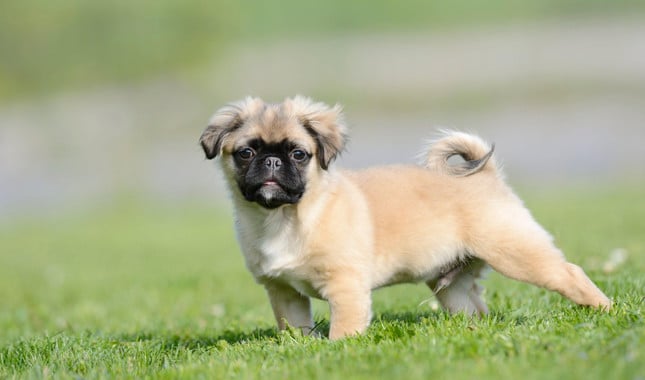The Ancient Bond Between Dogs And Humans In The Americas

Long before borders were drawn, humans and dogs built a bond that shaped life across the Americas. They hunted together, traveled together, and survived side by side. This story traces how two very different species became inseparable allies and explores the roles dogs have played over millennia.
A Bond Forged In The Ice Age

Thousands of years ago, small bands of humans crossed frozen territories chasing new horizons. Alongside them padded loyal, four-legged companions. These early dogs weren’t pets but hunting allies and warmth providers in a perilous, frigid world where survival depended on trust and companionship.
Canine Travelers Of The Bering Land Bridge

Roughly 15,000 years ago, humans and their dogs migrated from Siberia to the Americas via the Bering Land Bridge. Archaeologists believe dogs proved vital during this perilous journey. They tracked prey and likely hauled supplies, which earned them a place as indispensable partners in survival.
Unearthing Ancient Companions

Excavations across North America have revealed ancient dog remains dating back at least 10,000 years. Sites in Alaska and Utah uncovered canine skeletons buried near humans. These bones show signs of care and domestication, which prove that dogs were cherished members of early communities.
Koster’s Sacred Dogs

Archaeologists at the Koster site in Illinois uncovered graves of dogs buried individually with care over 10,000 years ago. These dogs weren’t discarded like refuse. Their careful burials suggest emotional bonds between humans and canines, hinting at affection and perhaps spiritual beliefs tied to these early companions.
Desert Survival

Danger Cave in Utah holds some of the oldest evidence of human-dog partnerships in arid America. Remains indicate that desert dwellers might rely on dogs to help hunt small game and guard camps from predators. These adaptable canines were important in surviving one of North America’s harshest environments.
Roles Beyond Companionship

In ancient America, dogs played critical roles beyond companionship. They helped hunt game across the plains, acted as vigilant guards in dense forests, and hauled supplies in the harsh tundra. Their adaptability across territories was key to human survival in shifting environments and climates.
Guardians Of The Spirit World

Across numerous indigenous cultures, dogs held spiritual significance. Often regarded as guides for souls in the afterlife, dogs were central to many burial rituals. Their presence in myths portrayed them as protectors, believed to safeguard their human companions from spiritual dangers.
The Ancient DNA That Changed Everything

Recent genetic studies have reshaped our understanding of early American dogs. These canines, closely related to Eurasian breeds, adapted uniquely over millennia to create distinct lineages. Genetic analysis has unveiled their significant role in shaping indigenous societies and their subsequent displacement during colonization.
When Colonizers Came

European colonization led to the erasure of Native American dog breeds. Indigenous canines, such as the Tahltan bear dog, were gradually replaced by European breeds. Interbreeding diminished the pure bloodlines, while many breeds disappeared entirely, erasing centuries of history and cultural significance.
The Challenges Facing Native Dogs After Colonization

European colonization also brought devastating diseases like canine distemper, rabies, and parvovirus, which spread quickly through native dog populations. They had no immunity against these foreign illnesses, so mortality rates were high, and many communities that depended on dogs suffered.
The Forgotten Faces Of Ancient Dogs

Ancient American dogs, distinct from European breeds, were smaller and adapted to diverse climates. They exhibited strong hunting instincts and loyalty. With long fur, they were ideal for cold temperatures, and their attributes made them invaluable in challenging terrains like mountains and plains.
Legends Etched In Stone

Dogs have been immortalized in indigenous petroglyphs and oral traditions. From rock art in the Southwest to myths in the North, dogs symbolized loyalty and spiritual strength in Native American societies. Ancestral Puebloans, Mississippian, and Aztec cultures, especially, left extensive rock art panels.
Silent Protectors

Beyond companionship, dogs played key roles in indigenous warfare. Some tribes trained dogs to act as sentries and even participants in battle. Their keen senses made them vital in detecting enemy movements, helping safeguard communities during times of conflict and tension.
A Symbol Of Wealth And Status

In many indigenous societies, owning certain types of dogs indicated wealth and high social status. Rare breeds were often exchanged as prestigious gifts between tribes. Their value went beyond utility to carry social bonds and alliances that shaped intertribal relations across vast regions.
Evolution Through Environment

The relationship between humans and dogs, lasting over 12,000 years, proves survival and loyalty. Dogs assisted in hunting and offered protection. Their role as partners in life and death teaches us about mutual dependence and the strength of long-lasting bonds.




